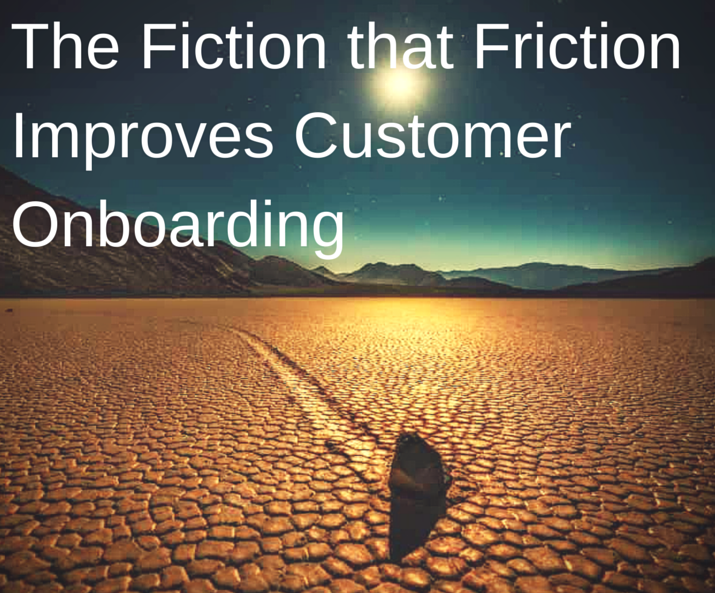 A few months back an article was published that talked about how this popular brain training game (I can’t remember what it’s called) made their onboarding process MORE complex – not less – and increased their active users by 10%.
A few months back an article was published that talked about how this popular brain training game (I can’t remember what it’s called) made their onboarding process MORE complex – not less – and increased their active users by 10%.
While the article was very clear on when to add friction, most of the discussion around the article that I saw fell into the category of “yes, that’s brilliant! I hate my users and customers anyway, so I’ll add MORE friction to our onboarding and we’ll improve like crazy!”
Crazy is the right word… but the context is wrong.
What they should have said was “I’d be crazy to simply add friction and think for a second that the outcome would be in some way positive.”
Unfortunately, this idea of adding friction has come up a few times recently, so I feel the need to dig into why adding friction all willy nilly is simply one of the stupidest things you could do.
But some people think we just…
Gotta Make ’em Jump Through Hoops
If you make your prospects jump through hoops to use your product, they’ll be more dedicated, right?
They’ll be more “invested” – they’ll have more skin in the game (OMG I hate that term) – and because of that they’ll magically become a long-term paying customer because that’s how things work in your make-believe world.
That’s not how things work in reality though. Sorry.
However, while simply adding steps – friction, hoops to jump through, game within which to invest skin – is a losing proposition, doing things that get the customer or user more engaged is always going to be a winning proposition.
You wanna be a winner, right? If you do, then…
Simplify the Process of Achieving Value
I’ve covered the secret to successfully onboarding customers before, and if you’ll recall, one of the keys is to focus on your customer’s Desired Outcome.
Nowhere in anything I’ve written, anything I’ve talked about, or in the work I’ve done with clients, have I ever said you must always reduce the number of steps a customer has to do to get value from your product.
In fact, sometimes you need to add steps; but it’s not some arbitrary addition of friction into the mix.
What I’ve always said is that you should reduce the number of unnecessary steps; but simplification doesn’t mean the number of steps always gets reduced.
In fact, quite often, in order to simplify the process of getting the customer to first value delivered – to that point where they either achieve real value for the first time with your product or see that it’s actually possible – we have to increase the number of steps.
Think about this… sometimes you sign-up for an app and there’s just two or three steps to get started and you’re like “this sucks” and “why do they need that?” in addition to lots of swearing.
But you’ve also experienced apps or services (more likely the latter since they’re less likely to fall into the “we’re software!” trap), that took you through 17 steps but it was engaging, and you felt like each form field you filled out was going to make your experience even better.
It may be hard to remember the latter and that’s kind of the point, right? (Yes, that’s kind of the point.)
The truth is…
Sometimes More is Less
Sometimes we add more fields or ask for more information and we – gulp – actually try to improve the UX around that to soften the blow and drive engagement. Even when you’re trying to add friction just to get people to jump through those hoops, you may catch yourself inadvertently adding elements to improve the experience.
That’s not a bad thing at all!
In fact, you might even add some marketing elements to it to get people to fill out the form and give you more info. When that happens, the takeaway is often reduced to “we added more form fields and increased signups” but the truth is more nuanced than that.
The reality is simple; if you didn’t design the process to be better and it just happened to turn out that way, then that change was caused in spite of your efforts… not because. And that’s a hard way to grow.
So treat your signup form like the marketing page it should be and continue the marketing (value prop) narrative through the entire process of customer onboarding. When you do, you’ll see increased signups and more Free Trial conversions.
It’s so simple; good things happen when you…
Improve Your Customer’s Experience
Adding contextually appropriate steps doesn’t equal friction, but actually improves their experience by quickly customizing the product or moving them down the right path and gets people engaged in the product quickly and deeply,
But just adding friction for the sake of adding friction makes zero sense. But man, it sure gets people to click on headlines.
Lumosity. That’s the name of that… ummm… game. It’s a game. And here’s the link to that article that I talked about at the top.
Now that I made you jump through so many hoops to get to that link, if the logic holds, you should become an avid reader of that blog.



